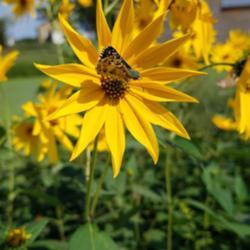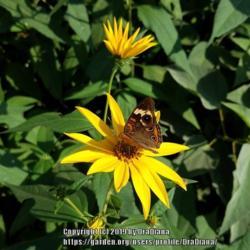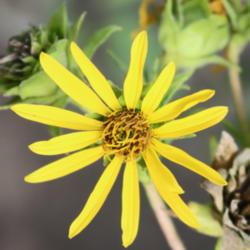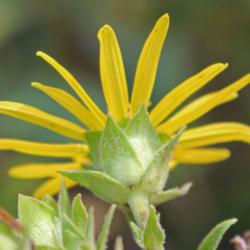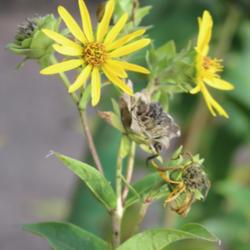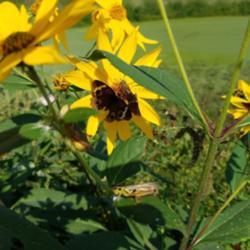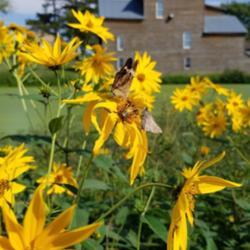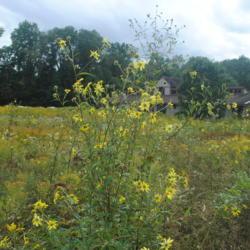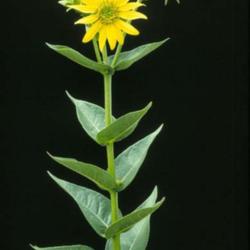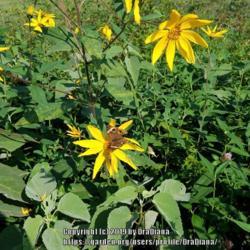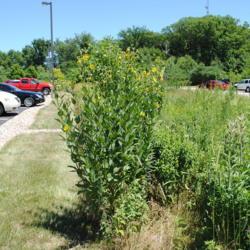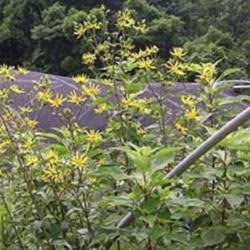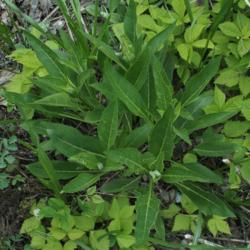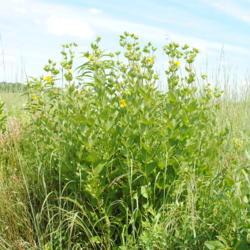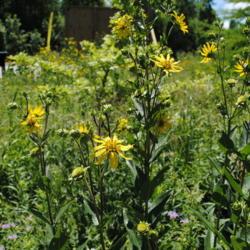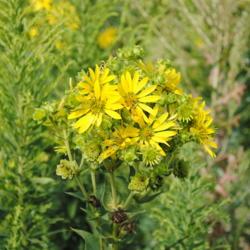General Plant Information (Edit)
| Plant Habit: |
Herb/Forb
|
| Life cycle: |
Perennial
|
| Sun Requirements: |
Full Sun
|
| Minimum cold hardiness: |
Zone 3 -40 °C (-40 °F) to -37.2 °C (-35)
|
| Plant Height: |
36 - 72 inches |
| Plant Spread: |
12 - 36 inches |
| Fruit: |
Edible to birds
|
| Fruiting Time: |
Fall
|
| Flowers: |
Showy
|
| Flower Color: |
Yellow
|
| Bloom Size: |
1"-2"
2"-3"
3"-4"
|
| Flower Time: |
Summer
Late summer or early fall
|
| Underground structures: |
Rhizome
|
| Uses: |
Will Naturalize
|
| Edible Parts: |
Fruit
|
| Wildlife Attractant: |
Bees
Birds
Butterflies
|
| Propagation: Seeds: |
Stratify seeds: Requires 2 months cold moist treatment.
|
| Pollinators: |
Moths and Butterflies
Flies
Bumblebees
Bees
|
| Containers: |
Not suitable for containers
|
- Rosinweed
- Wholeleaf Rosinweed
- Whole-leaf Rosinweed
- Entire-leaf Rosinweed
Posted by
ILPARW (southeast Pennsylvania - Zone 6b) on Feb 18, 2018 5:36 PM concerning plant:
This is a common forb of the prairie and Great Plains from Ohio to the Dakotas down to northern Texas to Mississippi. When in bloom it bears a fragrant resin that was used as gum by Native Americans. It rarely flops over as a tall perennial. Its flowers are the opposite of Sunflowers in that the disc flowers in the middle are sterile, while the ray flowers on the outside are fertile. It is sold by a good number of native plant nurseries in the Midwest for prairie restoration and naturalistic native plant gardens and landscapes.
Posted by
Cyclaminist (Minneapolis, Minnesota - Zone 5a) on Apr 30, 2016 12:01 PM concerning plant:
A neater and shorter relative of cup plant (Silphium perfoliatum). It spreads by short rhizomes to form clumps, and is more manageable than most perennial sunflowers, which spread by longer rhizomes. Probably the best Silphium species for small gardens (the other species are taller or have very large basal leaves), and a good replacement for perennial sunflowers. Drought-tolerant because of its deep fleshy roots. It matures and reaches flowering size faster from seed than prairie dock (Silphium terebinthinaceum) and compass plant (Silphium laciniatum).
As with all Silphium species, the flowers provide food to longer-tongued bees, which can reach the nectar, and occasionally to butterflies. The seeds are large, flat, and lightweight, and are sometimes eaten by goldfinches.
« Add a new plant to the database
» Search the Silphiums Database: by characteristics or by cultivar name
« See the general plant entry for Silphiums (Silphium)
« The Silphiums Database Front Page
« The Plants Database Front Page
